|
Radio
This is the most basic piece of equipment in any shack.
They have the Base Station radio, the Mobile radio, and the "HT" or "Handy Talk." Many can be bought in stores that
sells Ham Radio Equipment. Some can be built at home, either from scratch, or from a "kit." The output power can
vary from less than 1/2 a watt to 400 watts. These radios may handle one band ( a group of frequencies ) or several
bands. Some are HF only, HF + 6 Meters. Some will Do one or more of the bands in the VHF / UHF range. Now
some radios offer HF+ 6M + 2M + 70 CM. Also to be concidered is the modes it will opperate, such as AM, FM, Single Side
Band, Morse Code, and Digital. Some are menu driven ( buttons to select features, and settings ), while others have
buttons or knobs for everything.
Antenna Tuner
The Antenna Tuner can be very useful, and is found in
many Ham Radio Shacks. Since most modern radios operate at 50 ohms, this is the target resitance of most tuners.
They usaully work by fist adjusting for minimal inductance, then by adding capacitance untill a match is made. Do not
be fooled, One side bill have high resistance (side going to antenna), while the other side ( going to radio) will see a "matched"
resistance. It is always best to place the tuner as close to the antenna as possible to minimize excessive feed line
loss (as heat). Many place the tuner near the radio because it is simpler to use there. The Antenna Tuner comes
in two major flavors. One is the maual tuner, the other is the newer automatic tuner. They both contain some type of
capacitors, and inductors for tuning. It is always important to have a "tuned" antenna so you don't destroy your radio,
and it helps improve radio reception.
Terminal Node Controller (TNC)
A TNC is A Radio Modem. It does as it implies, and is similliar to the Telephone
Modem. It takes Computer Code and converts it to Audio Tones, and Vice Versa. Also It send it in frames known
as Packets. For Ham Radio, most is done in the AX.25 TCIP Protocol. A few Radios have them Built-In, but most
are stand alones. Most TNC's have several modes that can be handled, and has built-in Mail Box's.
Morse Code Keys
There are several types of keys all for
morse code. Here I will just talk about 2 of the most common types. The first is the Iambic Paddle, which
is hooked up to an electronic keyer (most modern HF radios have the electronic keyer built in). The basic funtion is
one paddle sends an automatic dot (dit), and the other paddle sends and automatic dash (dah). The Electronic keyer defines
the dot/dash, by setting up the ratio and words per minute speed.
The second main type of Morse Code Key that I will talk about is known as the Straight
Key. These are very simple, and do not require a electronic keyer, as you directly control the ratio, and speed.
But to get it to sound good it does take more practice. Many prefer to hear a straight key, because they can tell it
is a real person from the variances (dosn't sound so mechanical).
Spectrum Analyzer
This is a good piece of testing equipment for most
hams who like to build their own equipment. However it is very exspensive. They work by you defining a frequency
range for it to "listen" to, and in this range it will give you it's strength. This is very helpful in testing many
things concerning RF. For example, you have some unwanted RF noise, and you want to build a notch filter. You
can use a spectrum analyzer to make the adjustments, untill it removes the unwanted noise. If you are building a transmitter,
you can make sure that the harmonics are within FCC regulations. If you are building different filters, you can see
how steep the filter slope is. Any way, the list goes on, and on. The Spectrum Analyzer works in the frequency
domain, and should not be confused with an oscilliscope which workd in the time domain.
Oscilliscope
Another useful piece of test equipment is the Oscilliscope.
It compares a frequency, and voltage in the time domain. You can see the wave form, and tell if it DC, a Square Wave,
a Sine Wave, a Saw-Tooth Wave, or Audio. You can see wave shaping, as in for morse code, or do two tone testing
for Single Side Band. One can go on, and on for testing. As with most Test Equipment it can be very exspensive.
It can vary from several hundred, to several thousand Dollars. It is however, recommended that you get an Oscilliscope
that can receive and compare at least two signals. Most Oscilliscopes will handle upto 30Mhz, but to go above that would
make it more useful, but also make it cost more.
Low-Pass Filter
The low-pass filter is good to use for HF. It
is a way to be a "good neighbor." It works by passing RF below 30Mhz, and cutting off everything above 30Mhz.
This way you do not interfere with other your neighbors Television, Telephone, and other electronics. Remember it is
in our best interest to keep our neighbors "happy" with us. There are also other consumer electronics filters available
to prevent interferance. Also, there is RF chokes ( a type of filter) available to prevent interferance. I highly
recommend these in order to minimize potential of your outside equipment from being vandlized. It is not common,
but it has been known to happen. Just another reason to be a good neighbor.
Antenna Switch
The Antenna Switch is very handy when you have more
than one Antenna to hook-up to one radio, or one antenna to hook-up to several radios (the later is not recommended).
For example you have a HF radio, but you have one antenna for the high-bands, and another for the low-bands. The Antenna
switch would be handy, and would minimize damage caused by the wear and tear of constantly changing antennas at the back of
the radio. I thnk you get the basic idea.
Dummy Load Antenna
The dummy load Antenna is great for testing purposes,
where you do not want to have the signal on the air. They come in many shapes, and sizes. Some are small, and
don't handle a lot of power, while others are large, and handle a lot of power. Some are in paintcans filled with tranformer
oil to dissipate large amounts of heat. Typically it is a 50 ohm resistive load, in a container that prevent the RF
(rado frequency energy) from radiating. A good way to test, and tune equipment before going on the air.
|
 |
|

Example of a High-End base radio
|
 |
 |
 |
|
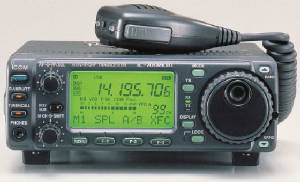
A common mobile/base radio
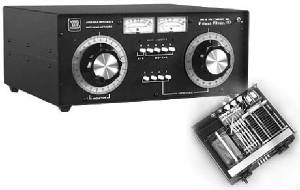
Manual tuner
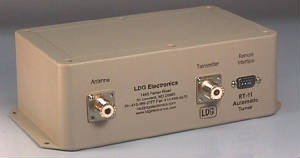
Auto-tuner

TNC or Teminal Node Controller

Iambic Key
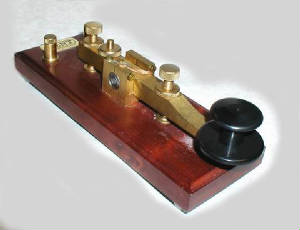
Straight Key
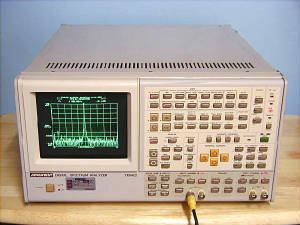
spectrum anlyizer
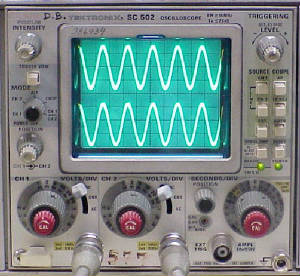
Oscilloscope
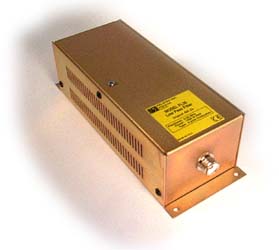
low-pass filter
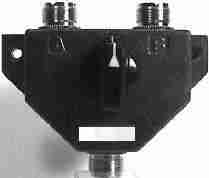
antenna switch

small dummy-load
|
|
 |
 |
 |
|
|
|

